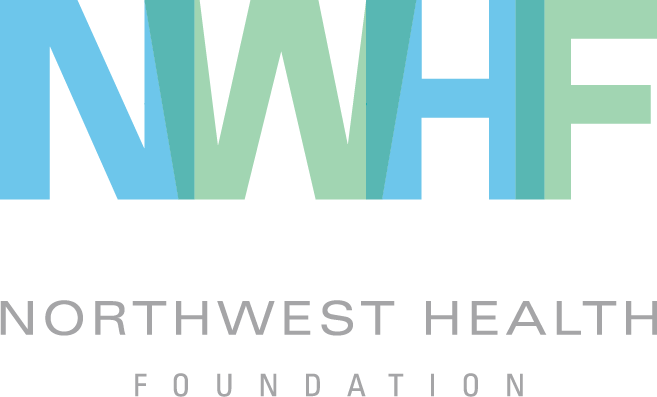Guiding Values: Partnership for Safety and Justice
/The Kaiser Permanente Community Fund (KPCF) at Northwest Health Foundation was founded in 2004 with an initial $28 million investment by Kaiser Permanente to improve conditions for health. As we learned how to best partner with community organizations, we made pivotal decisions that changed how we operated. In this story, we tell how Partnership for Safety and Justice taught us the benefits of formalizing and articulating our approach with guiding values.
Partnership for Safety and Justice advocates walk through the hall at Oregon’s State Capitol during PSJ’s lobby day.
Brittney’s life didn’t look like the lives of most other children. Her parents were incarcerated for addiction-related harms, and Brittney was passed around from family members to friends to strangers. She lived out of a suitcase, was depressed, and would sometimes lie in bed all day without eating or talking, just worrying about her parents.
Brittney’s experience is common for children of incarcerated parents, who experience lower health-related quality of life than their peers. Children whose parents are incarcerated face higher rates of heart disease, depressive disorders, and drug use than children who do not have parents behind bars. That is why we see Oregon’s growing prison population as a health problem. From 2000 to 2010, Oregon’s prison population increased by nearly 50%, putting the health of both inmates and their families at risk.
“Originally, KPCF received applications from, and funded, more traditional public health organizations and projects. But what we really wanted to get at was the social determinants of health — factors like economic opportunity or early life — that are shown to set the stage for lifelong health,” said NWHF Director of Programs Jen Matheson. In the mid 2000s, even though we knew in our hearts that incarceration was a health problem, we didn’t have a mechanism for the Kaiser Permanente Community Fund to invest in solutions. We weren’t reaching out to organizations that worked on this issue, and they were not applying for our grants. Instead, we saw applications from traditional healthcare delivery, community health, or academic health programs.
So, we embarked on a rigorous process with our advisors to evaluate the fund and its impact. Through the evaluation, we learned that the organizations we felt were a good fit for the fund embraced a set of specific approaches.
We decided to further explore these approaches, articulate them as values, and use those values as filters to decide who to fund. Those values were:
• Social and Racial Equity
• Collaborative Partnerships
• Community-Driven Solutions, and
• Systems Change.
With our newly articulated guiding values, we could appeal to organizations that may not have previously seen their work as a fit for the fund. One of those groups was Partnership for Safety and Justice, which promotes a more effective approach to public safety that focuses on prevention and keeping people out of prison. Andy Ko, the executive director of Partnership for Safety and Justice said, “The fund’s values were consistent with what we wanted to achieve...They also expressed through their own priorities that they understood the intersectionality and the systems element of what we were trying to do.”
We funded Partnership for Safety and Justice to improve health in communities disproportionately involved in the criminal justice system. The organization wanted to pursue justice reinvestment, which would steer state funds away from prisons and into community-based programs that help people succeed outside of prison. These programs include services such as crime prevention, mental health and addiction treatment, and crime survivor services.
We first supported Partnership for Safety and Justice with two capacity building grants to lay the groundwork for a legislative campaign. We then gave them a three-year grant to implement the campaign, which successfully secured passage of the Justice Reinvestment Act in 2013. Then we offered the organization another three-year grant to monitor how the law was implemented.
As a result of Partnership for Safety and Justice and their partners advocating for community-based alternatives to prison, eleven Oregon counties decreased their prison usage rates. These counties put fewer people in prison than before the advocacy campaigns, and more than 6,000 people were able to return to their families and communities.
One of those people was Elizabeth. By the time Elizabeth was 30, she had experienced abusive relationships, struggled with addiction, and felt like she was in basic survival mode. She was jailed multiple times over two and half years, each time separated from her family and community. After her last time in jail, Elizabeth qualified for the community programs now offered because of the work of Partnership for Safety and Justice and their partners. Instead of being behind bars, Elizabeth returned to her children and, with the help of organizations in her community, overcame her addiction. Last year, she celebrated with her family when her daughter got accepted to Stanford University.
Stories like Brittney’s and Elizabeth’s show us how we can make bolder decisions to create healthy communities. Articulating our guiding values was a pivotal movement in the Kaiser Permanente Community Fund that created the structure to make those decisions possible.



